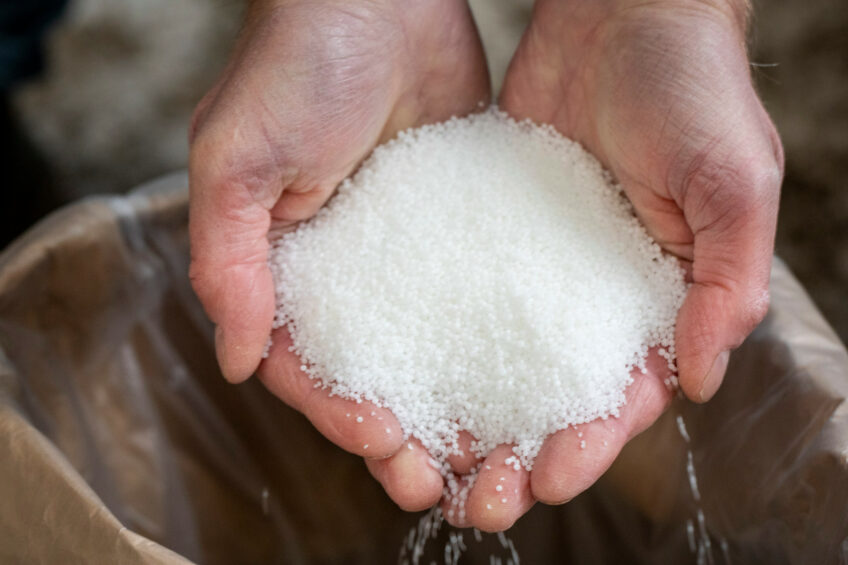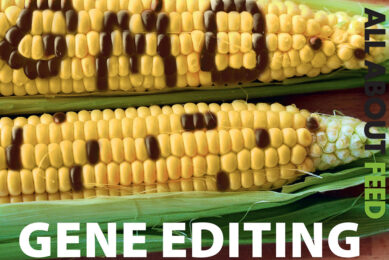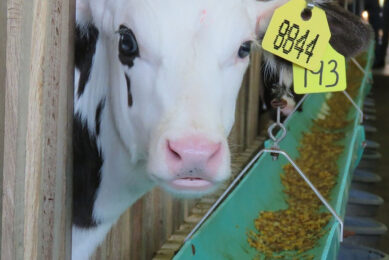Expert view on precision trace mineral delivery

Trace mineral nutrition continues to evolve with new technologies now on the market for rapidly determining levels of minerals in raw feedstuffs, new formats for absorption and more. All About Feed spoke with Animine in France to get the latest on how these technologies are currently changing the feed industry and to find out what lies ahead.
First, let’s look back a few decades. Up until the 1980s, minerals were given to livestock in inorganic form and inclusion rates were excessive. A decade later, around 1990, chelated minerals emerged, which provided significantly better bioavailability. Another 2 decades later, around 2010, came the advent of ‘functional minerals’ in specific active forms. Now in the 2020s, the precision mineral era is here, with unprecedented bioavailability and targeted products that produce maximum animal performance with minimal cost and environmental impact.
A holistic view on minerals
Animine Marketing Director Erlanda Upton Augustsson explains that precision mineral nutrition is about a holistic viewpoint, focusing on understanding the fate of trace minerals within production animals, considering interactions with other dietary components such as minerals, vitamins, fats and antioxidants. “This approach,” she says, “also examines the broader biochemical and physiological factors — including inflammation, gut integrity, intestinal modulation, pathogen reduction, oxidative balance, homeostasis, nutrient absorption and metabolic biomarkers — to optimise mineral utilisation for improved health and performance while minimising excretion into the environment.”
This creates a contradiction where there is investment in innovative solutions while simultaneously there are limits to their impact with a blanket ZnO approach.”
— Erlanda Upton Augustsson, Animine
Cutting edge tech powers precision
Precision mineral nutrition is achieved by making use of cutting-edge technologies. For example, Animine has a 4-year partnership with the French National Research Agency and the Institute of Analytical Sciences and Physico-Chemistry for Environment and Materials at the University of Pau, which resulted in a programme to employ various synchrotron techniques to study metallic mineral bio-accessibility, uptake and impact on intestinal microbiota.
New method reveals mineral uptake
With uptake for example, “by using spectral X-ray micro-computed tomography (sp-CT), a novel and validated methodology has been established to assess mineral uptake by hard tissues such as bone and eggshell, resulting in non-invasive 3D imaging of materials indicating where mineral deposits take place,” says Augustsson. “A scientific article detailing this unique methodology co-developed by Animine and its scientific partners, is currently being finalised for publication. Work is also underway to adapt and validate this methodology for use with intestinal tissues.”
Zinc use under the microscope
As an example of how precision nutrition works, let’s consider zinc, a mineral which has recently been subject to regulatory changes to reduce its use. Traditionally in pork production, high levels of ZnO have been included in piglet diets to control post-weaning diarrhoea and promote growth. While this approach provides a reliable performance boost during a stressful transition period, Augustsson says it’s well known that beyond environmental Zn accumulation, high levels of ZnO contribute to the selection of bacterial strains resistant to both heavy metals and antibiotics, raising public health concerns. European governments have introduced zinc reductions, and in response, the feed industry continues to develop targeted approaches that deliver much lower amounts of this mineral while also helping protect animal health. However, this is not without challenges.
We are moving the industry away from the old ‘shotgun approach’ to a more targeted, science-driven strategy.”
— Erlanda Upton Augustsson, Animine
Risks of excessive zinc use
Specifically, Augustsson explains there is now evidence suggesting that traditional excessive ZnO in the diet may mask subclinical inflammation by suppressing an animal’s immune responses, so their true health status is not apparent in some instances. More critically, high ZnO levels may also interfere with novel feed additives designed to enhance gut health and microbiome diversity. “This creates a contradiction,” Augustsson explains, “where there is investment in innovative solutions while simultaneously there are limits to their impact with a blanket ZnO approach.”
Smarter alternatives, deeper insight
Reducing levels of ZnO therefore requires effective alternatives that maintain health benefits without unintended side effects, says Augustsson, but it also requires a deeper understanding of nutrient interactions, microbiome dynamics and individual variability. This means that precision nutrition firms need to work closely with producers’ nutritionists to understand and adapt dietary formulations when ZnO levels are reduced.
Old norms, new challenges
Another challenge in precision mineral nutrition lies in outdated mineral inclusion recommendations. Augustsson explains that many standards are based on older diet formulations that do not reflect the latest advances. Take the use of phytase for example, which became common in the 2000s. It significantly alters dietary calcium:phosphorus ratios, yet many formulation guidelines still do not reflect this fact. This and other unnecessary barriers to optimal mineral supplementation still persist today.
No one size fits all solution
Additionally, Augustsson notes that livestock management practices vary significantly between countries. Factors such as weaning age, diet composition, antibiotic use and regional feeding practices all impact mineral nutrition, making a one-size-fits-all approach to precision mineral nutrition ineffective. “A further limitation to progress in precision mineral nutrition comes from benchmarking studies on bioavailability, which were not optimally or uniformly designed nor reflect current commercial conditions,” explains Augustsson. “The European Food Safety Authority has not reached a definitive conclusion on differences in zinc bioavailability, for example, making precise recommendations difficult. Moreover, commercial mineral products have evolved, with changes in chemical forms impacting dissolution and bioavailability — yet existing assessments often fail to account for these variations.”
Cost vs efficiency
Yet another hurdle is economic perception. Augustsson explains that many producers still assess cost per volume rather than cost-effectiveness in overall production. “Therefore, demonstrating the long-term value of precision mineral solutions — both for efficiency and environmental sustainability — is an ongoing challenge,” she says, “but we are up to that challenge and it’s our job and passion to understand, educate and offer effective economical and sustainable solutions to the industry.”
The future of zinc in feed
In terms of how she expects precision mineral nutrition to advance globally in the next 5 years, Augustsson foresees that the use of zinc oxide will be drastically reduced. “Europe leads in this area, and Canada will follow suit in 2027, reducing levels to 300 -500 ppm,” she says. “We also have increasing interest from the USA and China to look at alternative solutions.” At the same time, there are growing concerns about contamination of the environments with the heavy metals contained in feed and feed additives. Augustsson explains that while some products meet European regulations for heavy metal content, when used at higher levels in other parts of the world, they can exceed safe limits. Purer mineral products are the way forward.
Copper’s role in precision nutrition
Augustsson also anticipates that copper will gain more attention in precision livestock nutrition. It’s of course an essential nutrient but also a powerful antimicrobial, still used in some regions as a growth promoter for broiler chickens though inclusion levels are gradually decreasing.
Monovalent vs divalent copper
“A precision product with a high concentration per volume is needed to facilitate this shift,” she says. “However, the interactions between copper and other dietary compounds, including its synergistic and antagonistic effects, are not yet fully understood. Our monovalent copper stands out compared to divalent cations. Unlike divalent forms, which can bind strongly to phytate and reduce mineral bioavailability, monovalent copper offers better solubility and accessibility, ensuring optimal absorption and metabolic efficiency and reducing oxidative stress in animal diets.”
New tools for mineral research
Lastly, Augustsson notes that cutting-edge technologies, including advanced imaging, spectroscopy and molecular analysis, will continue to be critical. They are revealing mineral interactions like never before. In addition, she notes that computational systems such as mechanistic modeling, meta-analysis and machine learning are also refining precision mineral nutrition, “moving the industry away from the old ‘shotgun approach’ to a more targeted, science-driven strategy.”











